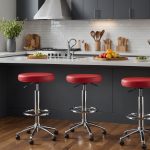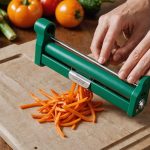Essential Safety Guidelines for Wood-Fired Pizza Oven Installation
When considering the installation of a wood-fired pizza oven in a restaurant, adhering to important safety standards and regulations is crucial for a secure operation. Compliance with local health and safety regulations not only ensures the workplace’s security but also helps avoid costly penalties. Here’s a closer look at these key guidelines.
Overview of Safety Standards: Each wood-fired oven must meet specific installation guidelines set by relevant authorities. This includes measures to prevent fire hazards, ensuring the oven’s components can withstand high temperatures and rigorous conditions typical of their use in a commercial setting. Adhering to these stringent standards is not just best practice; it’s a legal requirement.
Topic to read : Transforming customer service training in upscale dining: key strategies for excellence
Health and Safety Regulations: It’s critical to understand the local health codes that affect the installation and operation of these ovens. Businesses must ensure their equipment is compliant with newly updated regulations to prevent potential disruptions.
Key Certifications and Inspections: Restaurants installing wood-fired ovens should obtain certifications such as UL (Underwriters Laboratories) approval and ensure regular inspections by a qualified professional. This process guarantees that the oven installation is up to standards, offering peace of mind against potential safety risks and ensuring restaurant compliance. Engaging with local fire departments for additional guidelines can further enhance safety measures.
Have you seen this : Transforming family dining experiences: unleashing the potential of interactive tabletop games
Installation Best Practices
Selecting the right location for your wood-fired oven installation is crucial for both safety and efficiency. Key factors include proper ventilation and ensuring the oven is not near any flammable materials. Adequate ventilation prevents heat build-up and protects both the staff and surroundings from potential hazards. When choosing a spot, consider accessibility and compliance with local safety codes.
Construction and Material Considerations
Opt for materials that can withstand high temperatures without degrading over time. Fireproofing measures, such as incorporating heat-resistant bricks and insulation, are essential. Insulation not only aids in heat retention but also protects surrounding structures. This enhances efficiency and extends the oven’s lifespan, reducing the risk of fire.
Working with Professionals
It’s advisable to hire licensed contractors for the installation. A professional ensures compliance with safety standards and codes. They also bring knowledge of best practices, which is invaluable during construction. Consulting experienced wood-fired oven specialists can prevent costly errors. Vetting these professionals involves checking certifications, previous work, and client testimonials. This due diligence ensures the installation is performed expertly and safely. Proper installation is foundational for smooth operation and ongoing restaurant compliance.
Compliance with Local Regulations
Ensuring compliance with local regulations is pivotal for safe and lawful wood-fired pizza oven installation. Various regulatory bodies govern these installations, setting the necessary safety codes. Commonly involved are local health departments, fire safety authorities, and building inspectors. Understanding these bodies’ requirements is crucial.
Typical compliance guidelines often involve proper ventilation systems, adequate clearance from flammable materials, and specific construction materials to minimise fire risks. Adhering to these guidelines prevents legal issues and ensures safer working conditions.
Avoiding regulatory pitfalls can be challenging but is essential. Common mistakes include neglecting to install proper exhaust systems or failing to maintain appropriate clearance from flammable structures. Such oversights can lead to severe penalties or forced closure.
Keeping updated documentation is another critical aspect of compliance. Regularly updated permits and inspection reports prove adherence to regulations and facilitate smoother inspections. Documentation also helps in quickly addressing any non-compliance issues that may arise.
Maintaining awareness of safety codes and staying informed about regulatory updates can significantly benefit restaurant owners, reducing risks of operational disruptions. Proactively engaging with the relevant authorities can also ease the compliance process, fostering a safer restaurant environment.
Regular Maintenance and Safety Checks
Ensuring the consistent operation of your wood-fired oven not only extends its lifespan but also guarantees safety and efficiency. Integrating routine inspections and a maintenance schedule is pivotal.
Maintenance Schedule
A well-structured maintenance schedule includes frequent inspections and regular cleaning. Aim for monthly safety checks, with special attention to the oven’s flue and chimney. Regular chimney sweeping prevents the build-up of creosote, a common cause of fires. Keep a checklist of essential tasks, like checking for cracked bricks and flame barriers that can compromise safety.
Identifying Potential Hazards
Common hazards include blockages or excessive soot build-up in the chimney, which can impede ventilation. Pay attention to unusual smoke or smells, indicating the need for intervention. Monitoring the oven’s performance allows for timely issue detection, safeguarding against significant risks.
Training Staff on Safety Protocols
Training is paramount to maintaining high safety standards. All staff should understand the operation of wood-fired ovens, including emergency handling procedures. Suggest ongoing training sessions, utilising effective methods and materials tailored to your restaurant’s needs. Consistent education reinforces safe practices, contributing to a culture of safety within the restaurant. These steps ensure a robust safety protocol, enhancing kitchen operations.
Practical Examples and Visual Aids
Wood-fired pizza ovens can significantly enhance a restaurant’s ambiance and menu offerings. Successful installation examples demonstrate the importance of precision, planning, and adherence to safety guidelines. For instance, a thriving pizzeria utilized diagrams and mock-ups in early planning stages to ensure optimal oven placement, considering ventilation and clearance requirements.
Diagrams and infographics can be indispensable tools during both the planning and implementation phases. They visually represent essential factors such as ventilation paths, heat zones, and proximity to flammable structures. Incorporating these visual aids can help identify potential issues early on in the installation process, reducing the likelihood of costly redesigns later.
Utilizing comprehensive safety checklists further ensures compliance with installation standards. Such checklists often include steps for securing proper clearances, verifying material suitability, and confirming essential certifications like UL approval. By adopting these tools, restaurant owners can streamline operations, pinpoint necessary improvements, and uphold safety standards consistently.
Exploring case studies and adopting visualization techniques in planning can serve as invaluable guides for newcomers. They provide evidence of best practices in action while also offering tangible solutions to common challenges faced during the installation of wood-fired pizza ovens.
Resources and References
For seamless wood-fired oven safety, tapping into credible resources is essential. Organizations like the National Fire Protection Association (NFPA) and the Underwriters Laboratories (UL) offer comprehensive safety guidelines and standards addressing oven installations. These authoritative entities provide valuable insights into effective safety practices.
To deepen understanding, exploring recommended reading materials can be beneficial. Publications like “Fire Safety and Installation for Commercial Kitchens” delve into installation standards and best practices. Additionally, online databases such as PubMed offer scholarly articles on the technicalities of oven construction and safety protocols.
Accessing relevant compliance documents is crucial for restaurant compliance. Local government websites typically host updated safety regulations and guidelines, which are vital when planning installations. Engage with these documents to fully grasp the legal landscape and avoid any regulatory hiccups.
For practical guides, installation manuals often include visual aids like diagrams and blueprints illustrating proper construction methods and layout designs. Physical copies of these documents might be available through equipment suppliers or specialized industry bookstores, enhancing the ease of learning and application of safety norms. Leveraging these resources supports effective, safe, and compliant wood-fired oven installations.











